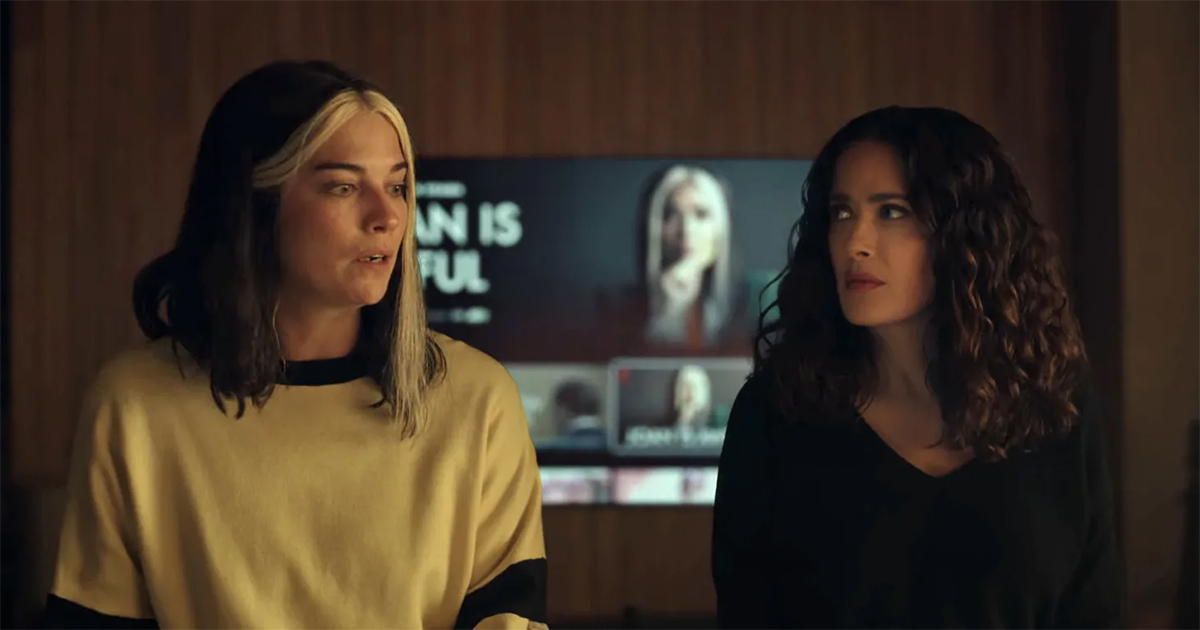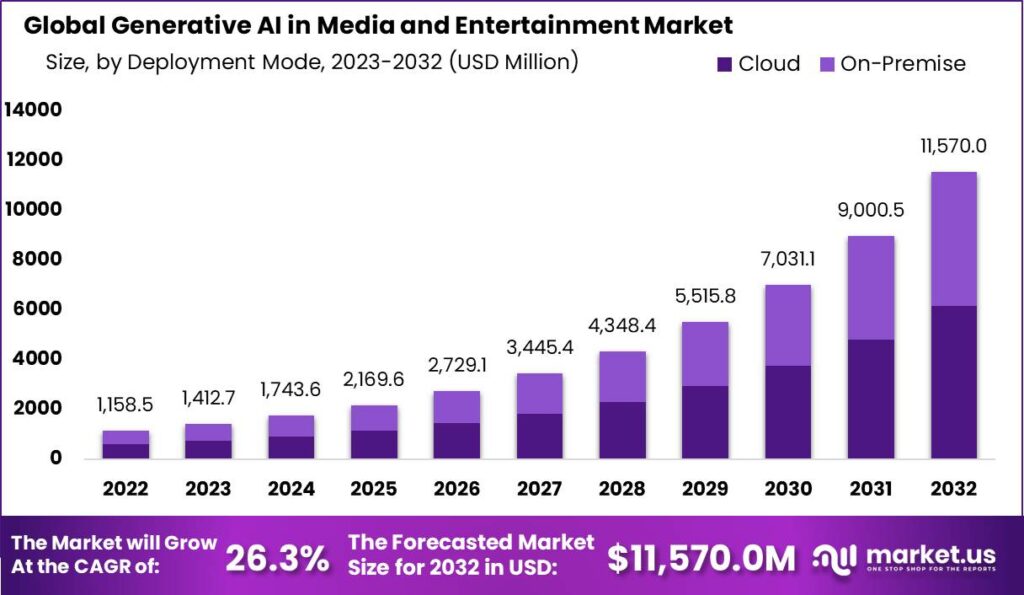
TL;DR
- There remains a fear that increased use of AI in Hollywood will lead to identical, emotionally hollow content.
- Yet, as generative AI moves into production and experiments with AI for scripting unfold, the threat of completely upending how we produce and consume entertainment seems overblown.
- The most encouraging developments with AI so far seem less likely to replace humans than to assist them.
The deepest fear that Hollywood creatives have about AI is that it will replace jobs from the industry and all the life from storytelling. The reality is that Hollywood creatives mostly believe that generative AI is nowhere near good enough to produce final product without huge human involvement.
Visit NAB Amplify’s AI channel here.
AI Content Possibilities
Katie Notopoulos at Fast Company outlines the extremes. She quotes Edward Saatchi, founder of production company Fable Studio, predicting a future where there’s a “Netflix of AI” that allows viewers to pick from an array of customized episodes of their favorite shows.
“You could also speak to the television to say, ‘I’d like to have a new episode of the show, and maybe put me in it and have this happen in the episode,’” said Saatchi, whose company is developing an AI-generated animated series.

On the flip side, Adam Conover, writer and board member at WGA West, told Fast Company, “Maybe there will be some AI-generated chum that shows up on Twitch and people have it on in the background while they do their homework — but that’s not going to compete with movies.
“Movies are: ‘I want to go sit in the dark. I want to watch the hottest person in the world say the funniest things in the world and ride a real f***ing motorcycle off a cliff.’ That’s what people want.”
Expected AI VFX Efficiencies
Without doubt AI will increasingly come into play as a time (and cost) saving tool by automating and simplifying complex tasks, most notably in VFX.
Lon Molnar, chief creative officer of VFX company Monsters Aliens Robots Zombies (MARZ) tells Fast Company that smaller-budget movies and shows will have easy access to Marvel-quality effects — in five to 10 years.
That’s still a way off and in any case fits into the wider and ongoing trend that tech advances from digital cameras to YouTube have in ‟democratizing” filmmaking.
Around half of U.S. entertainment industry workers polled by YouGov and Variety Intelligence think that GenAI will be used for processes like sound effects, autocompleting code to assist in game programming and developing 3D assets and artwork for storyboards — within three years.
At a basic level, generative AI could be used to save money on expensive reshoots, even on the tightest of budgets.
With AI, you could “generate a video model based on all the footage from your scene, and then generate new shots based on the photography that you captured,” filmmaker Paul Trillo tells Fast Company. “That’s going to rewrite the rules of postproduction.”
READ MORE: AI is going to transform Hollywood — but it won’t be a horror story (Fast Company)
AI Scripting? Wait and See
However, the same YouGov/Variety poll found just 18% of U.S. entertainment workers believing that GenAI will be able to effectively write film and TV scripts anytime soon, ranking the lowest of any creative task.
Certainly, chatbots such as ChatGPT are capable of producing output in the manner of a screenplay. “It’s less plausible that AI can yet, soon or ever succeed at producing a complete, coherent and production-ready script without at least some human assistance,” said Variety’s Audrey Schomer.
It is more likely that existing Large Language Model-based AI tools can assist writers to speed script development, for example, exploring alternative storylines or generating ideas.
In this sense, “an LLM might better operate as a muse, brainstorming aid or sounding board,” suggests Schomer.
LLM-based tools could help writers rapidly ideate and iterate story concepts, including providing possible settings and scene locations; character names, identities and backstories; and plot points and narrative arcs.
At the same time, studios might experiment with using LLMs for ideation, generating basic concepts for pilots and movies that could be expanded into treatments and scripts, Schomer suggests.
READ MORE: Gen AI Isn’t Off-limits for Hollywood, But How Should It Be Used? (Variety)
The Impact of “AIGC”
Studio execs who might want to create more content for less money might be inconvenienced (in the short term at least) by the deal struck with the WGA and by reluctance to be hit by copyright law suits.
The fear remains, however, that the overriding economic impact of AI will inevitably lead to a future of mass-generated ersatz content, or as The Economist’s Alexandra Suich Bass puts it, “we’ll all be watching synthetic entertainment generated by robots and acted out by CG versions of beloved stars, a hollow version of the films we loved.”
Just as the internet led to an explosion of “user-generated content” being posted to social media and YouTube, generative AI will contribute to reams of videos proliferating online. Some predict that as much as 90% of online content will be AI-generated by 2025.
GenAI may result in more derivative blockbusters and imitation pop songs, but the technology could also generate original ways of storytelling. For instance, AI could be the catalyst for new types of personalized and interactive stories.
With de-aging tech, screenwriters can craft more ambitious time-skipping narratives — something we might see in Robert Zemeckis forthcoming feature Here, starring Tom Hanks and Robin Wright.
“With the ability to render convincing cityscapes, historical dramas can roam far beyond the handful of carefully scouted locations that usually serve as their sets,” Notopoulos suggests.
Cristóbal Valenzuela, who runs AI software development company Runway, call AI a “new kind of camera,” offering a fresh “opportunity to reimagine what stories are like.”
As Trillo explained, “I’m less interested in using AI to make things I can shoot with a camera than creating imagery I couldn’t create before.”
READ MORE: AI will transform every aspect of Hollywood storytelling (The Economist)
Projections/Predictions
This year, the value of generative AI in the media and entertainment space is expected to reach $1.7 billion, according to a new report. The research also projects a 10-year compounded annual growth rate of 26.3%, reaching $11.5 billion in 2032.
While M&E is among the first industries to be impacted from top to bottom by GenAI, there are likely to be strong legal challenges putting the brakes on its adoption this year.
The use of GenAI for text-to-image generation is projected to reach $2.6 billion as the tech “democratizes content creation and fosters collaboration between AI and human artists, making content creation more accessible,” the report argues.

Other segments, such as video generation, 3D modeling and animation, games, film and television, advertising and marketing, music and sound production, and VR/AR, are also poised for “substantial” growth.
The value of GenAI in games, for example, is projected to surge from $477.7 million to just shy of $5 billion by 2032. In film and television, the tech is expected to top $2 billion in value by the same period million by 2032. AI is playing a pivotal role in scripting, character animation, and content personalization, as well as AI-driven content recommendation algorithms.
The report values generative AI’s use in advertising and marketing to grow to nearly $2.5 billion in a decade as AI increasingly automates content creation for marketing campaigns, offering personalization and efficiency.
In music and sound production, the value of GenAI is set to expand to $1.34 billion by 2032; AI-driven music composition, sound effects, and mastering tools “are streamlining creative processes in the music industry.”

In all of this, the use of cloud (data centers) holds a significant position. As of 2023, this segment accounted for the largest revenue share of 52.7% in the global generative AI market for media and entertainment and is projected to grow at a rate of 26.5% for the foreseeable future.
Cloud deployment offers the extensive computing resources necessary for complex AI algorithms, leading to faster processing and rendering times for high-quality real-time content creation. It also provides scalability and facilitates global team collaboration, allowing for easy sharing, editing, and updating of AI models among teams.
Regional Analysis
In terms of regional analysis, North America stands out as the dominant player in for generative AI in the M&E market. Per the report, in 2022, North America accounted for 40.6% of revenue; Europe followed with a 22.2% market share in 2023.
The report identified the Asia Pacific “experiencing robust growth” with a projected market value of approx. $37.45 billion by 2032.

